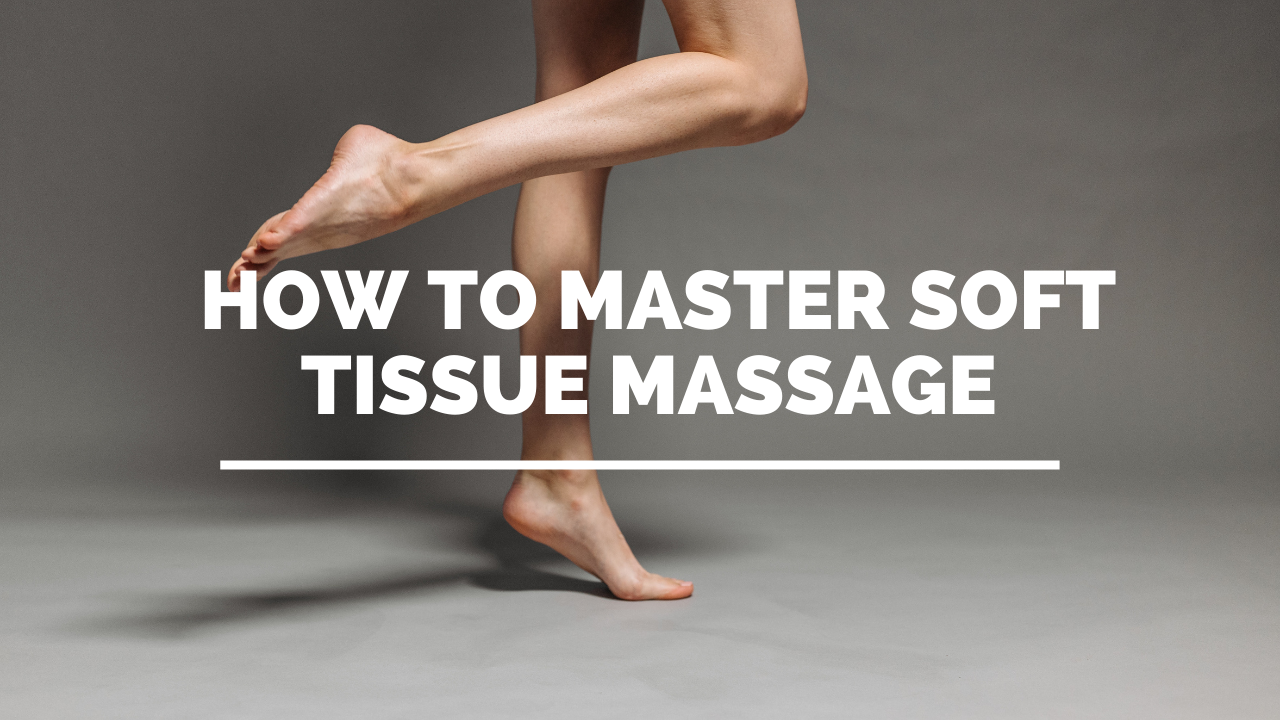How to master soft tissue massage at home
Dec 06, 2021
While it’s great to treat yourself to sports massages now and then, self-administered soft tissue massage at home can be just as effective, particularly for your lower limbs. The truth is, you don’t need to press too hard, you shouldn’t be wincing or feel pain at all as you release tension. It should be a smooth ‘slide and glide’ motion.
The key is to make this type of massage part of your weekly routine. Even just massaging yourself once a week for 20-30 minutes will make a difference and help you avoid possible injuries down the line.
Doing soft tissue massage this way has the following benefits:
- It increases blood flow and oxygen to the area you’re treating
- It helps to reduce pain and inflammation
- It decreases muscle cramps and spasms
- It will help to increase your range of motion and flexibility
- It helps to relax the mind and body while reinforcing this important connection.
Most importantly, this type of manual soft tissue massage puts you in tune with your body, enabling you to spot any problems or tension arising before it becomes an issue.
Studies have shown that soft tissue therapy is particularly good for problems such as plantar fasciitis – which is inflammation of the plantar fascia, the part of the foot that connects your heel bone to your toes, as well as epicondylitis which involves inflammation of the tendons that attach the forearm muscles to the elbow.
It’s also excellent for ankle mobility as it releases tight tendons in and around the ankle and foot.
How to perform self-administered soft tissue massage:
WATCH this video for my step-by-step guide on how to release tension in your lower body.
Here are a few key points I cover in the video:
- It’s best to use a wooden spoon or drumstick without the varnish if you have one, as well as a wax-based salve rather than a cream or a lotion as these can get sticky and stop working.
- You can also use your fingers to complete the soft tissue massage in a particular area.
- When you start, you may feel a crunching sensation under the stick, that’s a good sign and nothing to be alarmed about. However, bear in mind that you don’t want to feel more than a 3/10 pain sensation though.
- You want to create a relative slide and glide grip when you massage so that it feels smooth and effortless. It should feel nice and long and fluid.
- As you massage your legs, take special note of scars which can cause further shortening of muscles or tendons and lead to a disruption in your neural circuit.
- When you’re massaging your calves, start by gliding the stick down the front of the leg (shin), then the side and back of the calf, massaging a little deeper (but not painful) as you go down the calf muscle. Slow, controlled movements work well at the back of the calf. The aim is to try get the stick up close to the bone behind your shin.
- Complete 30 slide and glide strokes down the front and down the sides of your leg.
- Then, as you get to your foot, you want to use your knuckles to work along the sides and middle part of the foot and heel with a special focus on your big toe as the big toe tendon runs on the outside of your leg (next to your shin bone).
- Foot massage is very effective with your knuckles. Simply sit on your knees with your bare feet out behind you and use your knuckles to massage from your heel to your toes. Aim for 15 strokes through your foot, on either side and through the middle of the foot.
- It’s also important to massage with your knuckles through your heels as you store an incredible amount of tension there.
Did you know?
Your Achille’s tendon wraps around your calcaneus, which is the large bone forming the heel and goes into your forefoot. So, your plantar fascia and Achille’s tendon are linked. Improving the one improves the other.
Mobility moves for recreational runners
What I’ve noted over the years is that professional athletes tend to suffer from more niggles in the lower limbs, such as the calves, while recreational runners get injured higher up.
If you’re a recreational runner, aim to add these key mobility moves to your routine every week, along with self-administered soft tissue massage:
- Happy hips – This mobility sequence is the starting point to enable supple, functional hips when you move and a relaxed, fluid body.
- The penguin move - This simple move isn’t just good for pain relief, it helps to down regulate the nervous system, and is a great hip mobilisation exercise that increases flexibility and creates more space between your joints and connective tissues.
- The million dollar move – this move teaches you how to master 3D hip control which is fundamental to good running form. The aim is to not be caught behind your hips when you run.
ALSO SEE: My deep dive into why we overuse our calves and how to avoid this
For more ways to recover faster and work with your body, not against it, join my weekly mobility, meditation and breathing classes.
I promise you, they all compliment sports like cycling, swimming and running beautifully.
Stay connected with news and updates!
Join our mailing list to receive the latest news and updates from our team.
Don't worry, your information will not be shared.


